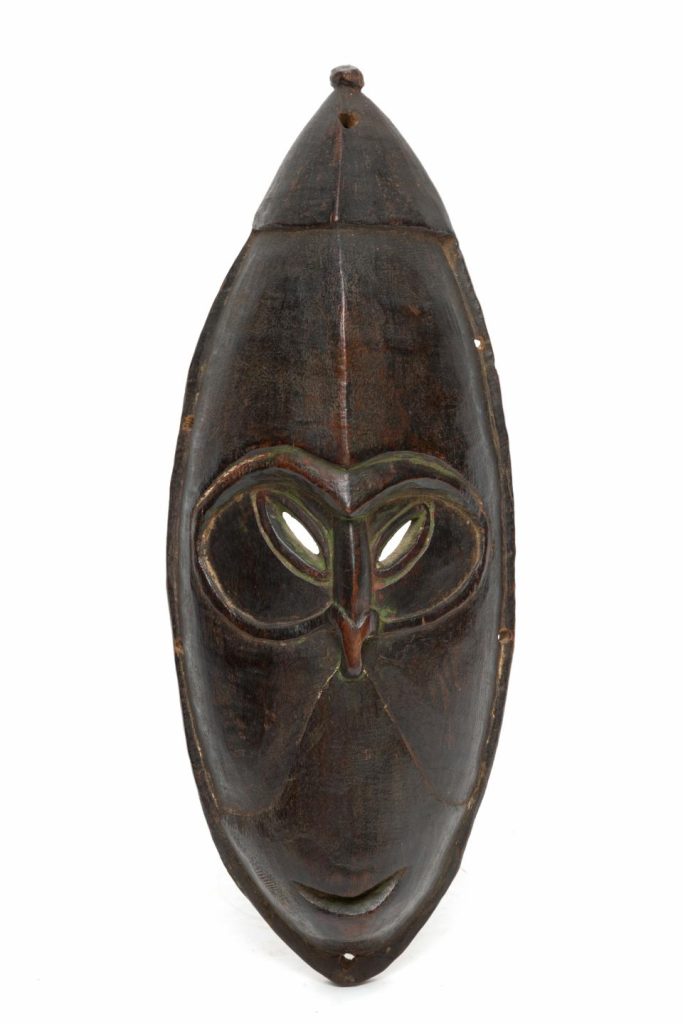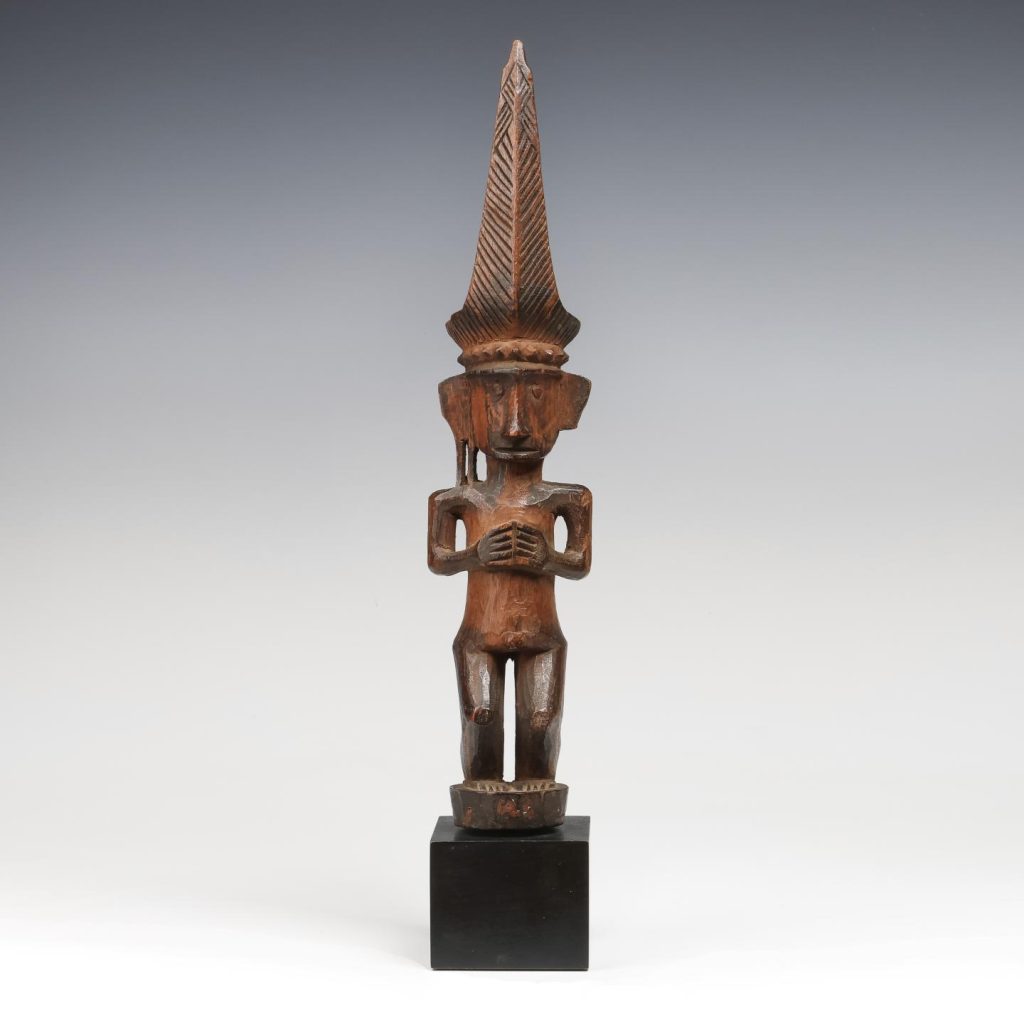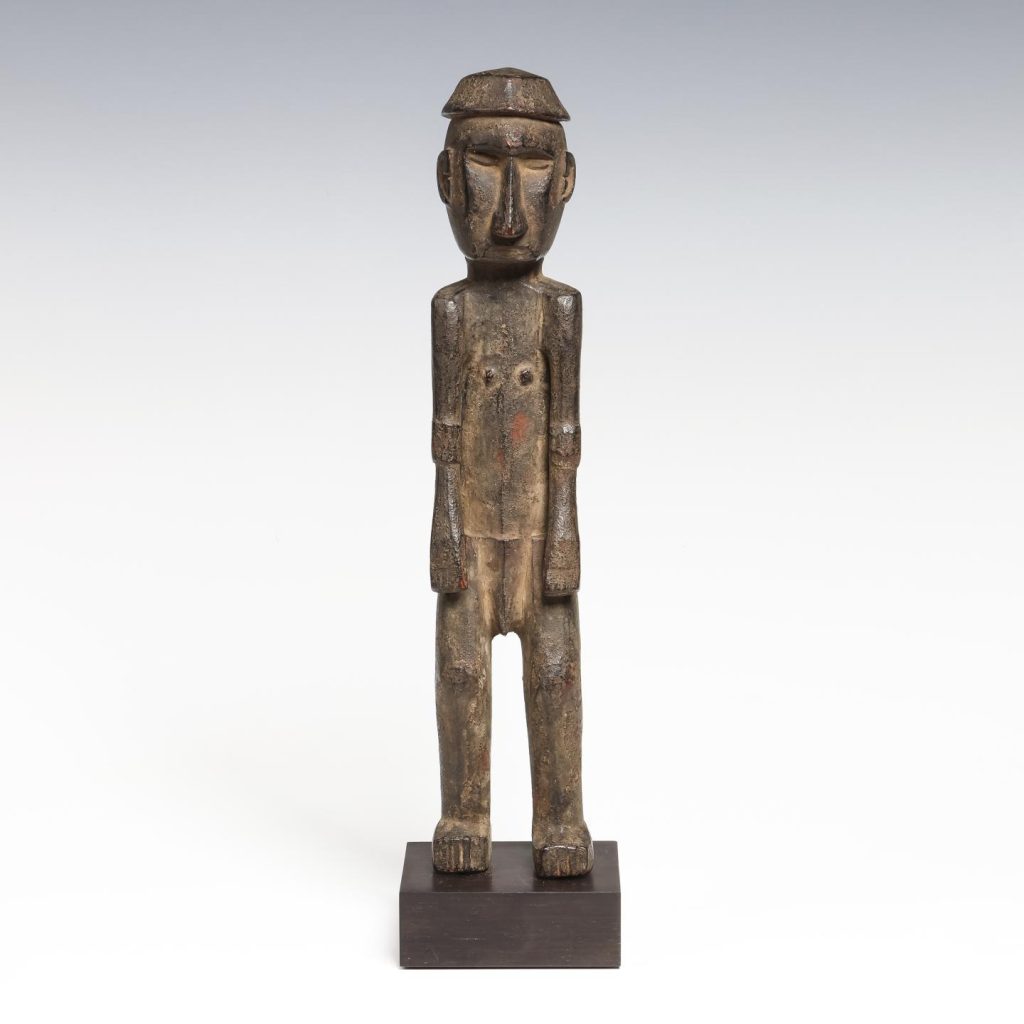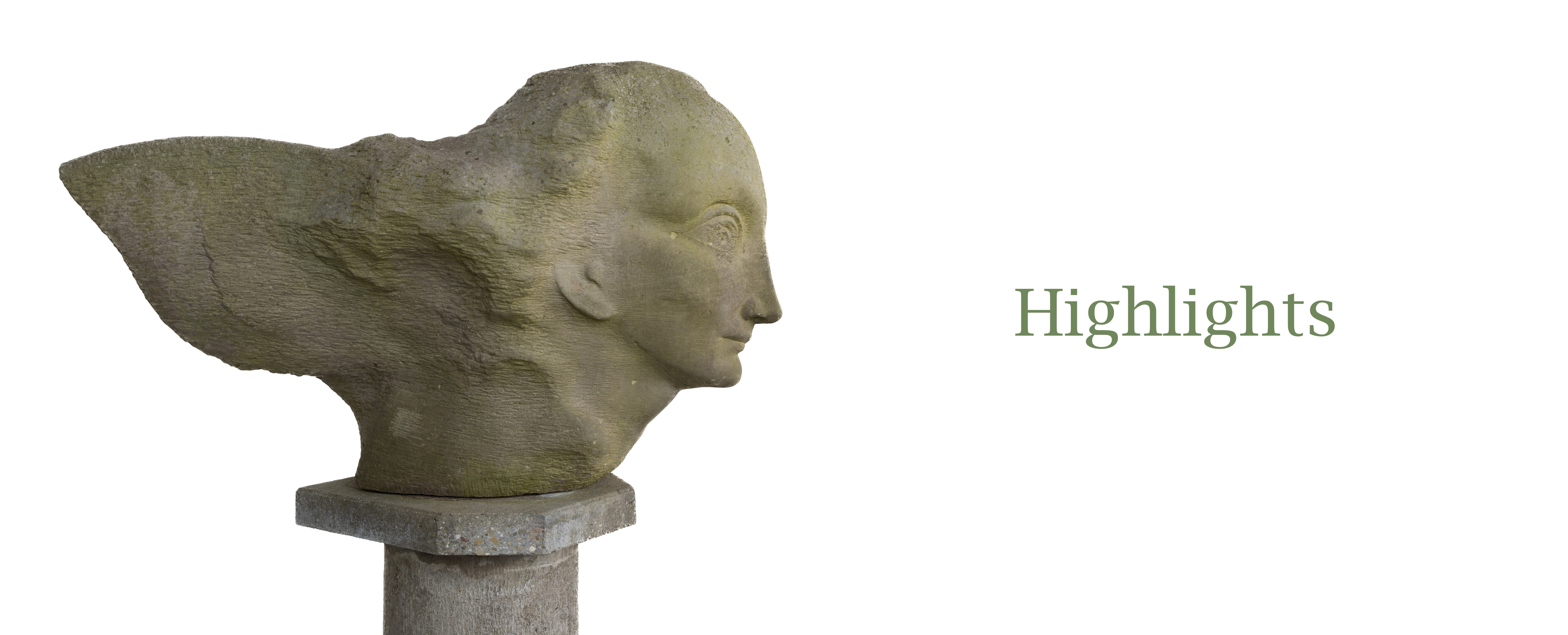Ritual Objects
In our current auction a number of very beautiful ritual statues are offered from various private Dutch collections:
The four Nias figures from the private collection of Rudolph Bonnet
A set of four ancestor figures from the island of Nias, west of Sumatra.
A number of figures remained in the Vlaanderen-Bonnet family, and from this part of the collection the four lot numbers 5603; 5604; 5605; 5606 are now offered.
Rudolph Bonnet also took photos of the collected Nias figures himself.
On one of these photos the male ancestor figure with the special conical headdress, lot number 5605, can be seen on the right side.
With this collection of four Nias sculptures you as a collector get the chance to acquire a Nias figure that was collected early and also by an artist with an admiring view of the ancestor culture of the island of Nias.
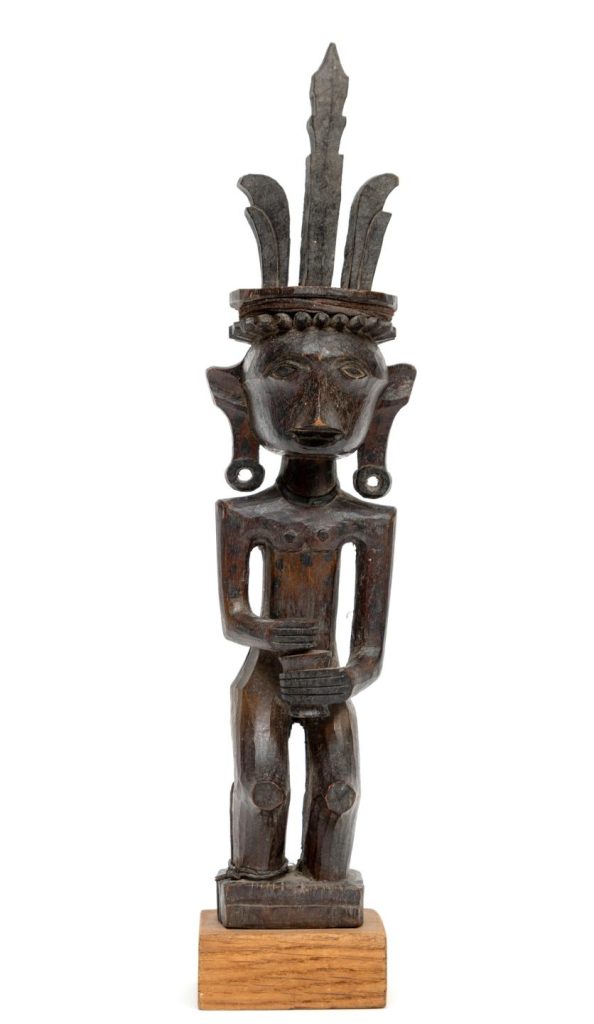
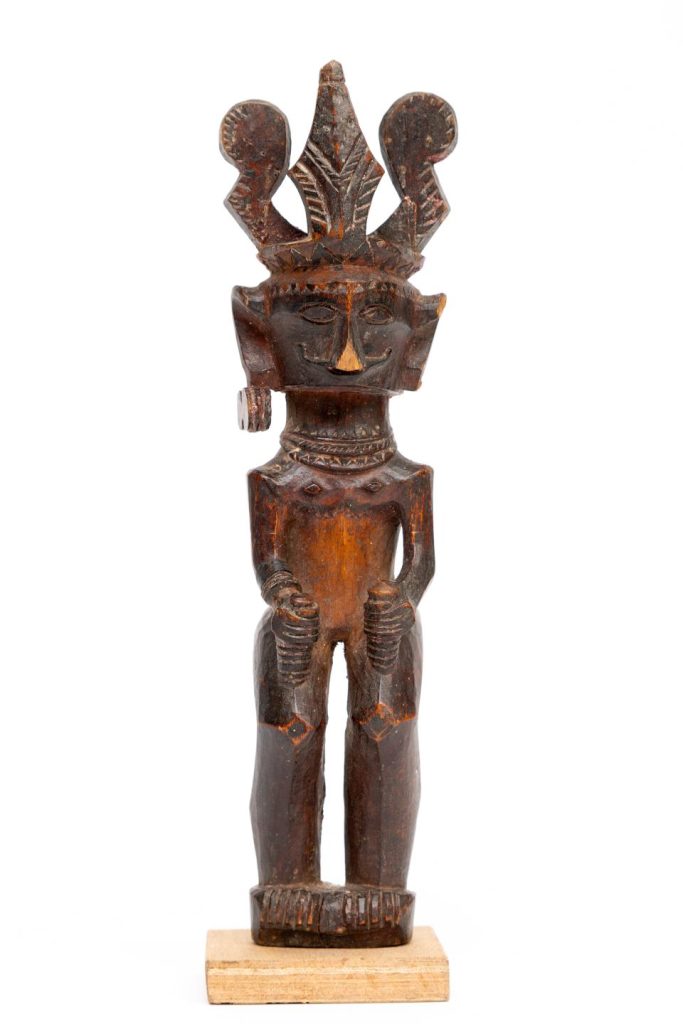
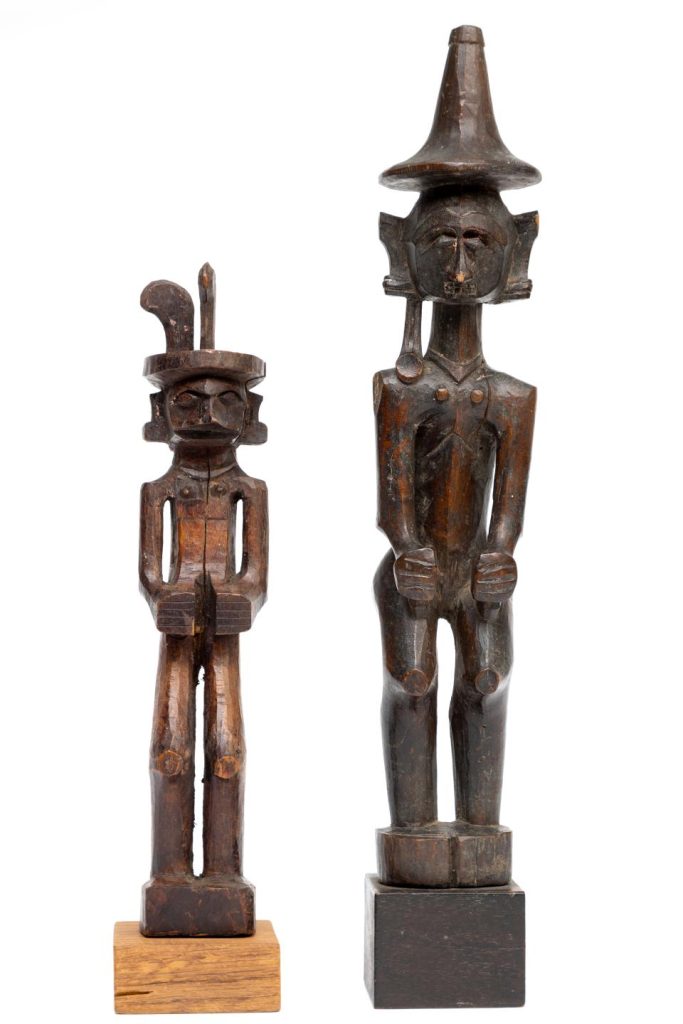
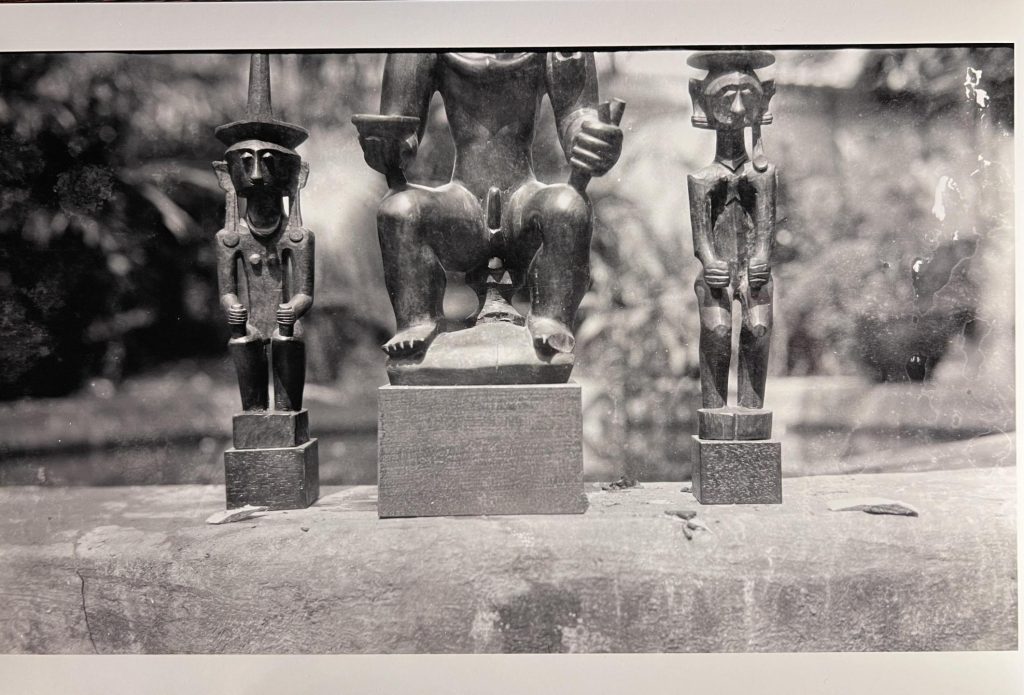
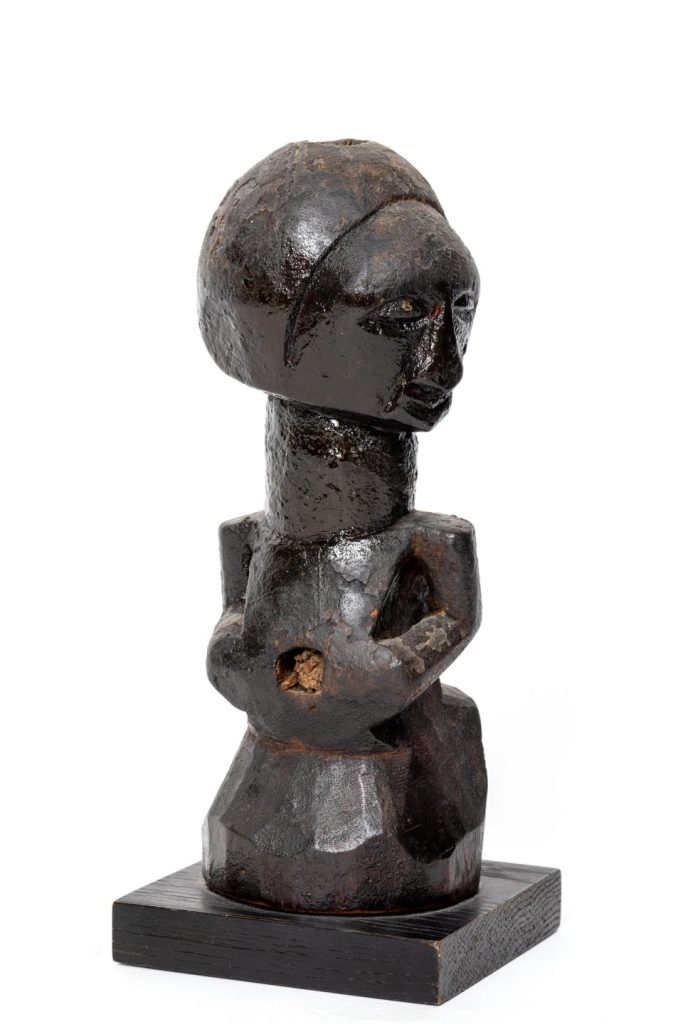
Songye sculpture, lot 5415
During a visit to Galerie de Ruimte in Eersel, the current collector fell in love with this statue and it became an important part of his collection.
The Songye statue that will be offered belongs to a small corpus of enigmatic Songye sculptures with the heads turned dramatically to one side. The purpose for which these mankishi were intended has not yet been clarified.
A deep blackish patina covers most parts of the body, the result of many treatments with palm oil, resulting in a head that is still covered in this viscous liquid.
The face has a good-natured expression with half-closed eyes and a smiling mouth. The body is shaped as a half-figure with a strong emphasis on geometric shapes: a strong tubular neck stands on a slightly waisted torso, the freely cut arms arise from rectangular shoulders and the lower body is conceived as a trapezium with a flattened back. Details such as fingers, toes, sex and hairstyle have been omitted. By doing this the artist/specialist was able to carve a powerful vessel for the special ingredients, bishimba, found in the two cavities in the belly and the fontanel. Within the published examples this item has a unique quality.
Jean Nies of Galerie de Ruimte was able to offer the collection of the well-travelled Dutch collector Fred ten Houten to a new collector. Large parts of his collection were also exhibited for years in the Gerardus van der Leeuw Museum in Groningen between 1970-1996. In the current auction, a number of other ritual objects from the private collection of Fred ten Houten are offered by other Dutch collectors. Lot no. 5609. two Nusa Tenggara, ancestor figures. Lot no. 5355, Baule figure.
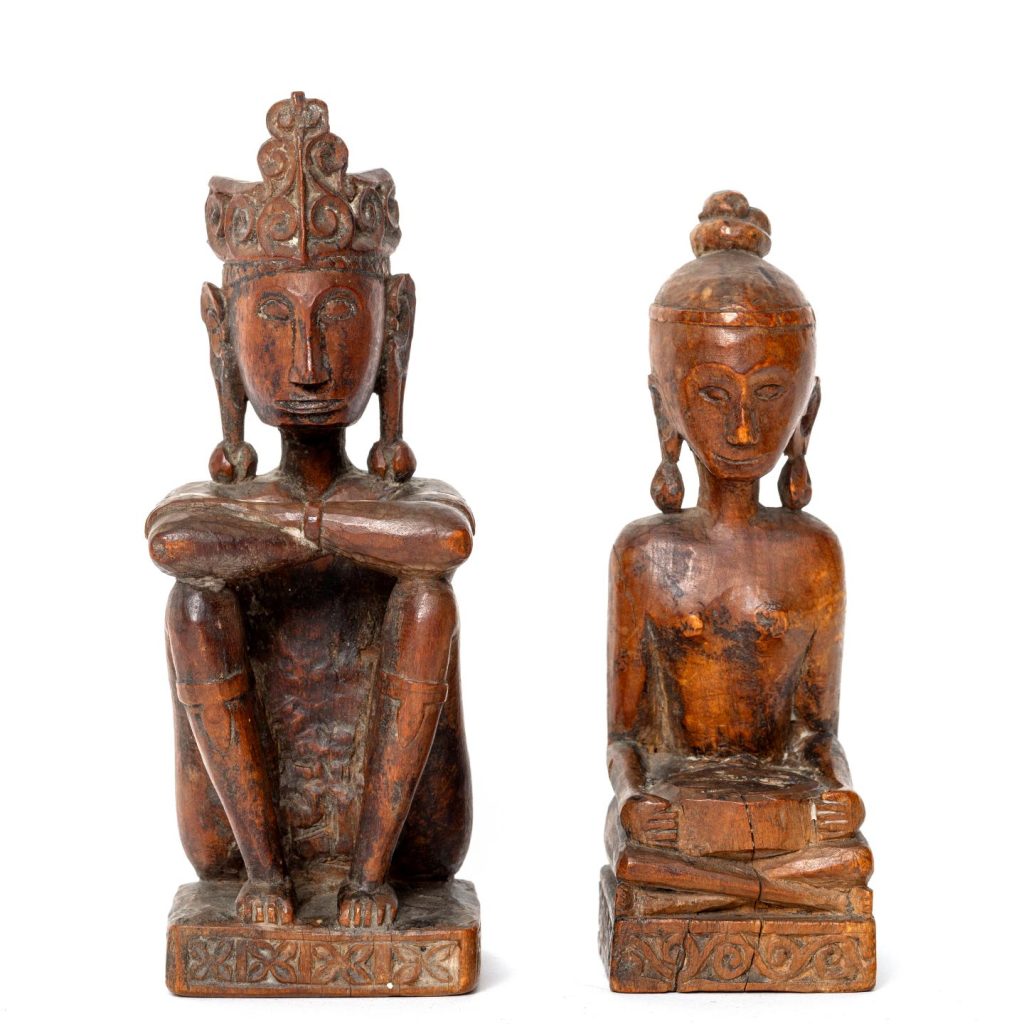
Two ancestor figures from Leti
Lot numbers 5601-5602, two small wooden ancestor figures, called yene, most likely come from an old collection, possibly from a Dutch family that once worked in the Moluccas. Although we do not know the collection history, we know from inspection of the statues themselves that these are old statues. Because of our colonial background, special pieces are sometimes found. We are therefore very pleased to be able to offer these two small ancestor figures from the island of Leti.
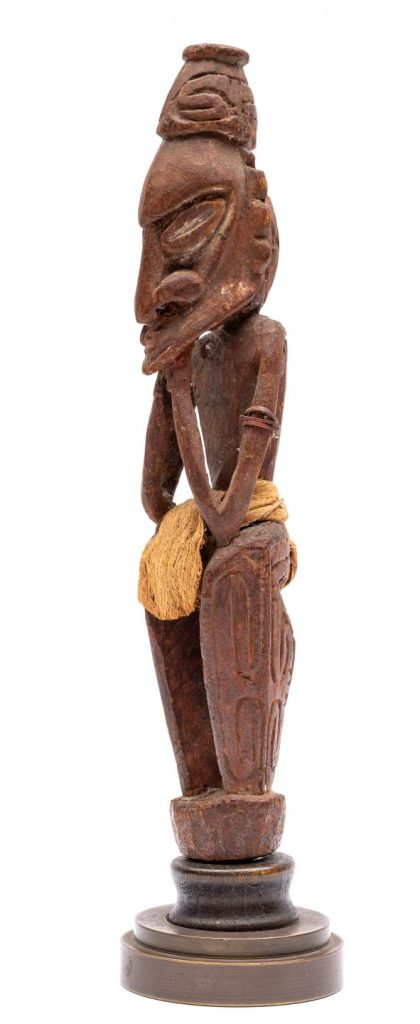
Sepik Standing Figure
Lot number 5654 was for decades one of the most beloved spirit figures from the collection of a Dutch couple. Already acquired in 1964 and much loved all those years.
It is a refined figure with a classically large pronounced head, in proportion to the entire figure. This figure is covered with a dark reddish brown patina and is comparable to the amulets, brag, and kandimbong ancestor figures found in the lower Sepik and Ramu river areas. In these smaller sculptures the head and legs are emphasized. By carving a headdress the head appears to be elongated and forms a third of the total height of the figure. A prominent nose with a pierced septum shows a hanging ornament. Freely carved thin long arms in a rare W-shape ending in unaccented hands that touch the chin. The legs in the present figure are accentuated by an incised pattern with a central ridge that runs from the hip to the base; feet are missing. The same pattern is found in the headdress, while the back of the head has the same pattern carved around a hollow in the wood. The back has an intriguing serrated V-shape, which may represent an initiation mark. These clan-related carved patterns probably originate from the Murik Lakes.
From various contributors there are a few special objects to mention.
Lot number 5662, is an ancestor figure of the Atauoro, which was exhibited in the exhibition of the Vereniging Vrienden Etnografica in the Museum Berg en Dal in 2008 and published in the accompanying collection book Tribal Treasures in Dutch Private Collections, Rossel and Wentholt, 2008, page 131.
An old Ramu mask from a private collection, lot 5653 and a refined Nias ancestor figure, lot number 5657, from the important dealer in Indonesian art from The Hague, DH Blok and another collector-dealer from The Hague Ed. Smit. Now offered by a passionate private collector.
